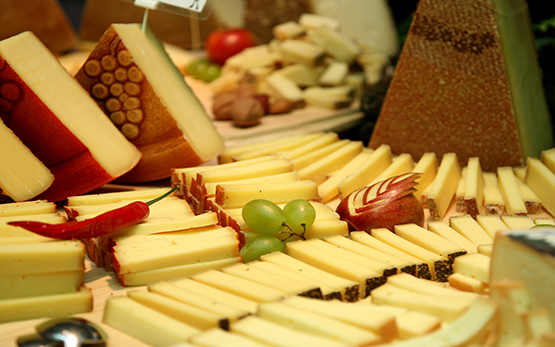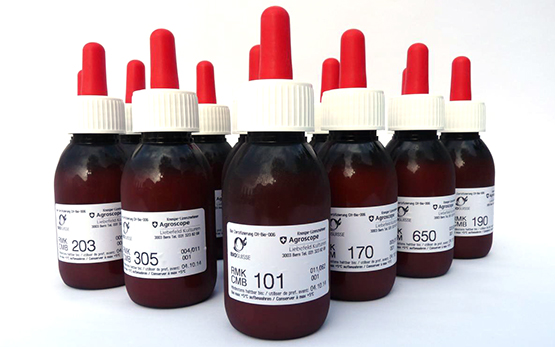
Sensory properties, i.e. taste, flavour and consistency (texture), are among the most important quality characteristics of the 450 or so different Swiss cheese varieties, and are frequently a decisive selection criterion for consumers.
Cheese flavour
The characteristic flavour of a cheese variety is a complex mixture of taste-bearing and odorous chemical compounds, and develops as the cheese ripens. It is primarily bacteria which occur naturally in the milk, or are added as a culture during the cheesemaking process, that are responsible for the creation of flavour. These bacteria convert mainly proteins but also fats and carbohydrates into a wide range of flavour-active substances that characterise the flavour of a cheese. The temperature and humidity during the ripening period influence which bacterial species are encouraged during the ripening of the cheese, and linked with this, the mix of flavouring compounds produced.
A further important flavour component is salt, which mainly enters the cheese via the salt bath.
Texture
Texture also plays an important role in the sensory evaluation of a cheese. In addition to visual cues, this primarily includes sensory impressions that can be perceived with the sense of touch. Assessing eye formation in a cheese, for example, forms part of the visual evaluation. Biting and chewing the cheese in one’s mouth allows us inter alia to make a statement on how firm, crumbly or elastic the cheese is.
The development and manufacture of bacterial cultures for the Swiss cheese sector has a long tradition at Agroscope. A wide range of scientifically proven sensory testing methods as well as specially trained test panels are employed in these research activities. The focus here is on questions of how bacteria influence the sensorially perceptible properties of cheese and other dairy products. A further important aspect is sensory testing for the formation of undesired off-flavour notes or textural characteristics that negatively impact cheese quality.
Contact
Research Project






